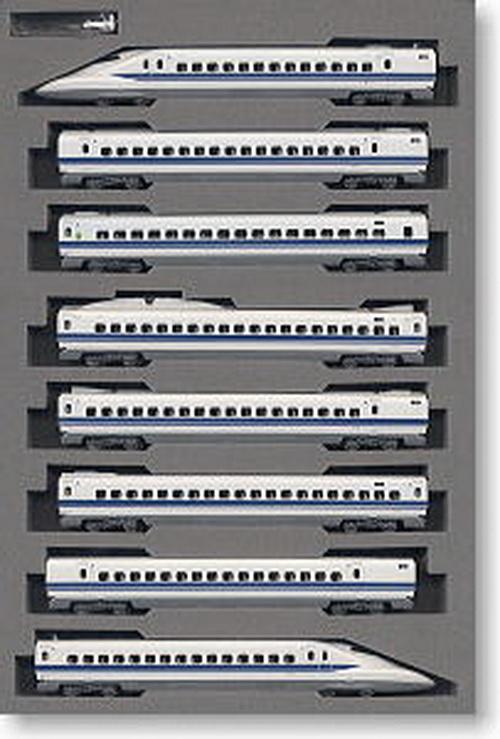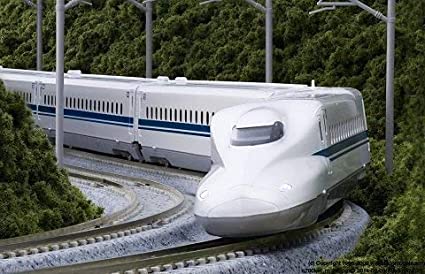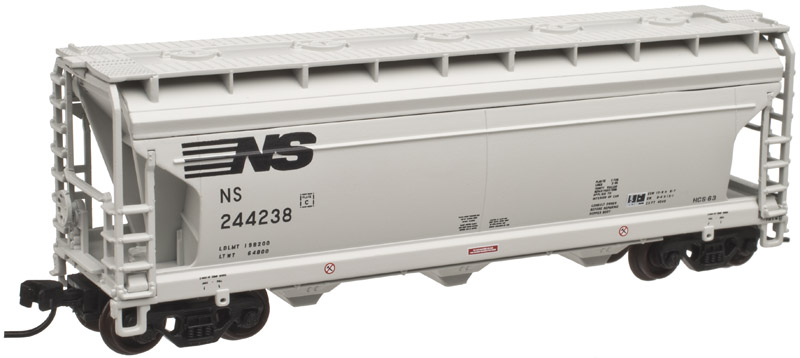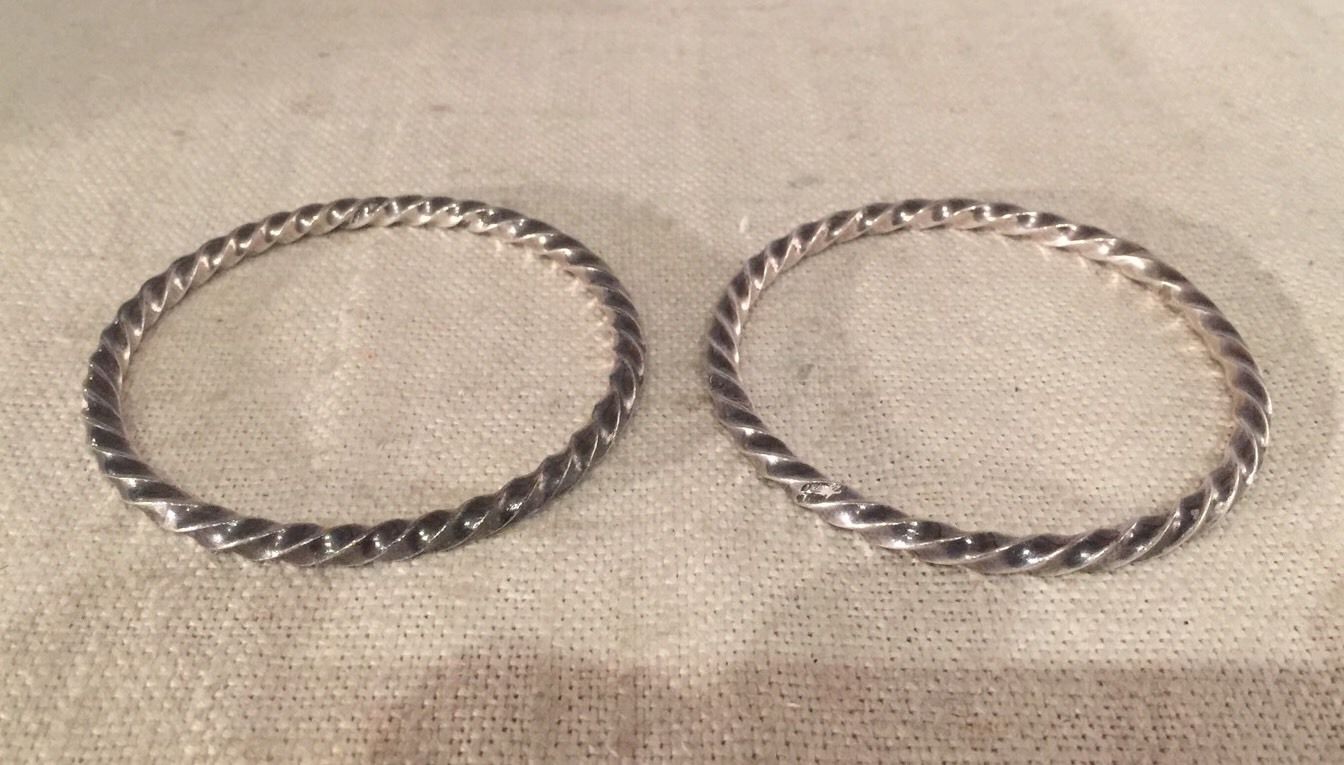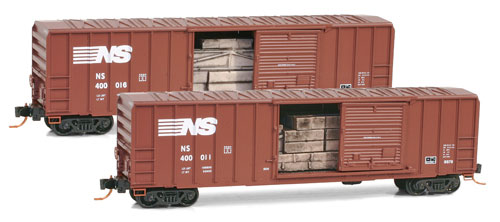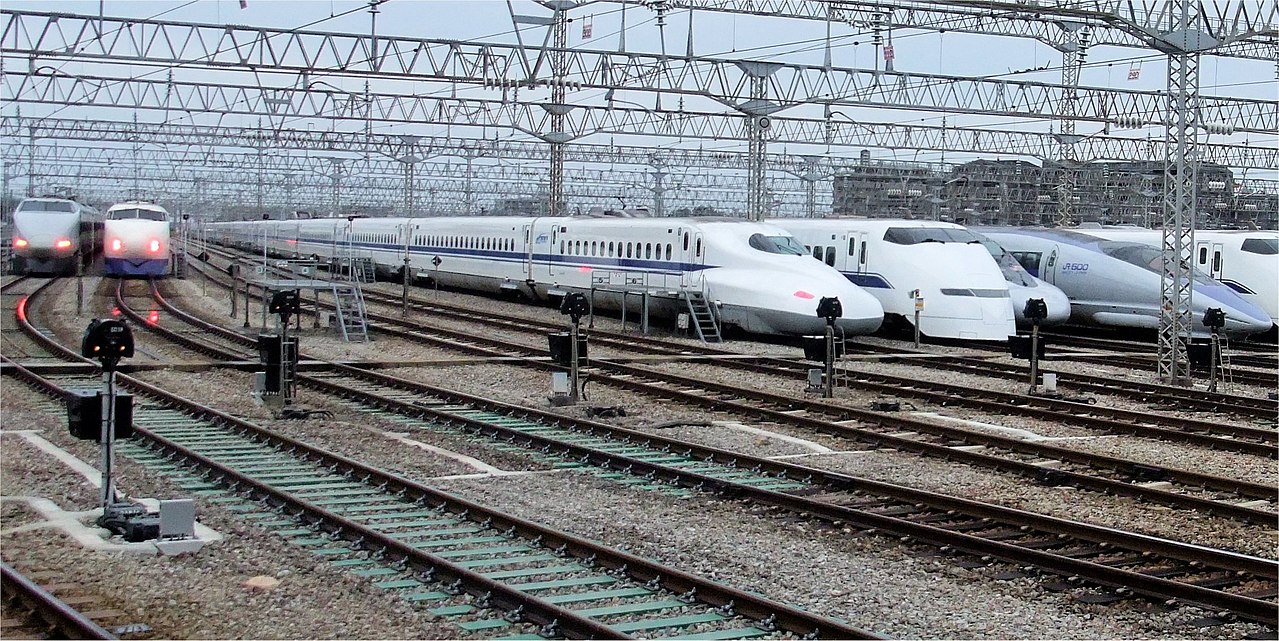Kato - 10-397 - Passenger Train, Electric, Shinkansen - JR Central/JR West
| Stock Number | 10-397 |
| Original Retail Price | 16,290¥ |
| Brand | Kato |
| Manufacturer | Kato |
| Body Style | Kato Japanese Bullet Train (Shinkansen) |
| Image Provider's Website | Link |
| Prototype Vehicle | Passenger Train, Electric, Shinkansen (Details) |
| Road or Company Name | JR Central/JR West (Details) |
| Reporting Marks | JR 700 |
| Paint Color(s) | White,Blue |
| Print Color(s) | Blue |
| Paint Scheme | Nozomi |
| Coupler Type | Kato Operating Knuckle |
| Wheel Type | Nickel-Silver Plated Metal |
| Wheel Profile | Small Flange (Low Profile) |
| Multipack | Yes |
| Multipack Count | 8 |
| Multipack ID Number | 10-397 |
| Series Name | Nozomi |
| DCC Readiness | Friendly |
| Release Date | 1999-12-19 |
| Item Category | Passenger Trains |
| Model Type | Electric |
| Model Subtype | Shinkansen |
| Prototype Region | Japan |
| Prototype Era | JP Stage 3: Post-war Recovery (1945–1987) |
| Scale | 1/160 |
| EAN/JAN/GTIN13 Number | 4949727513539 |
Specific Item Information:
8 (eight) car set with 1 (one) Motorized car.
The 700 series is a Japanese Shinkansen high-speed train type built between 1997 and 2006, and entering service in 1999. Originally designated as "N300" during the development phase, they formed the next generation of shinkansen vehicles jointly designed by JR Central and JR-West for use on both Tokaido and Sanyo Shinkansen lines.
[ Additional Items ]
(10-398) Series 700 Shinkansen `Nozomi` (Add-on 8-Car Set)
[ Optional Parts ]
11-211 LED Interior Lighting Kit, Ver.2 (DCC Optional: FR11) (1ea)
11-212 LED Interior Lighting Kit, Ver.2 (DCC Optional: FR11) (6ea)
11-213 LED Interior Lighting Kit, Ver.2 (Indirect Lighting Type) (DCC Optional: FR11) (1ea)
11-214 LED Interior Lighting Kit, Ver.2 (Indirect Lighting Type) (DCC Optional: FR11) (6ea)
11-204 New Interior Light Kit (Including 1 Set)
11-209 Interior Light Kit with White LED (Including 1 Set)
11-206 New Interior Light Kit (Including 6 Set)
11-210 Interior Light Kit with White LED (Including 6 Set)
[ Optional Parts (For advanced users) ]
TL1 Single DCC Function Decoder (Control for Head Light, Tail Light, Interior Light etc.) (1pc.)
DZ126 Decoder (for Motor Car) (1pc.)
8 (eight) car set with 1 (one) Motorized car.
The 700 series is a Japanese Shinkansen high-speed train type built between 1997 and 2006, and entering service in 1999. Originally designated as "N300" during the development phase, they formed the next generation of shinkansen vehicles jointly designed by JR Central and JR-West for use on both Tokaido and Sanyo Shinkansen lines.
[ Additional Items ]
(10-398) Series 700 Shinkansen `Nozomi` (Add-on 8-Car Set)
[ Optional Parts ]
11-211 LED Interior Lighting Kit, Ver.2 (DCC Optional: FR11) (1ea)
11-212 LED Interior Lighting Kit, Ver.2 (DCC Optional: FR11) (6ea)
11-213 LED Interior Lighting Kit, Ver.2 (Indirect Lighting Type) (DCC Optional: FR11) (1ea)
11-214 LED Interior Lighting Kit, Ver.2 (Indirect Lighting Type) (DCC Optional: FR11) (6ea)
11-204 New Interior Light Kit (Including 1 Set)
11-209 Interior Light Kit with White LED (Including 1 Set)
11-206 New Interior Light Kit (Including 6 Set)
11-210 Interior Light Kit with White LED (Including 6 Set)
[ Optional Parts (For advanced users) ]
TL1 Single DCC Function Decoder (Control for Head Light, Tail Light, Interior Light etc.) (1pc.)
DZ126 Decoder (for Motor Car) (1pc.)
Prototype History:
The Shinkansen (Japanese: 新幹線, pronounced [ɕĩŋkã̠ɰ̃sẽ̞ɴ]), colloquially known in English as the bullet train, is a network of high-speed railway lines in Japan. Initially built to connect distant Japanese regions with Tokyo, the capital, in order to aid economic growth and development, beyond long-distance travel it is now also used as a commuter rail network. It is operated by five Japan Railways Group companies.
Starting with the Tōkaidō Shinkansen (615.4 km, 382.4 mi) in 1964, the network has expanded to currently consist of 2,764.6 km (1,717.8 mi) of lines with maximum speeds of 240–320 km/h (150–200 mph), 283.5 km (176.2 mi) of Mini-Shinkansen lines with a maximum speed of 130 km/h (80 mph), and 10.3 km (6.4 mi) of spur lines with Shinkansen services.[4] The network presently links most major cities on the islands of Honshu and Kyushu, and Hakodate on northern island of Hokkaido, with an extension to Sapporo under construction and scheduled to commence in March 2031. The maximum operating speed is 320 km/h (200 mph) (on a 387.5 km section of the Tōhoku Shinkansen). Test runs have reached 443 km/h (275 mph) for conventional rail in 1996, and up to a world record 603 km/h (375 mph) for maglev trains in April 2015..
From Wikipedia
Starting with the Tōkaidō Shinkansen (615.4 km, 382.4 mi) in 1964, the network has expanded to currently consist of 2,764.6 km (1,717.8 mi) of lines with maximum speeds of 240–320 km/h (150–200 mph), 283.5 km (176.2 mi) of Mini-Shinkansen lines with a maximum speed of 130 km/h (80 mph), and 10.3 km (6.4 mi) of spur lines with Shinkansen services.[4] The network presently links most major cities on the islands of Honshu and Kyushu, and Hakodate on northern island of Hokkaido, with an extension to Sapporo under construction and scheduled to commence in March 2031. The maximum operating speed is 320 km/h (200 mph) (on a 387.5 km section of the Tōhoku Shinkansen). Test runs have reached 443 km/h (275 mph) for conventional rail in 1996, and up to a world record 603 km/h (375 mph) for maglev trains in April 2015..
From Wikipedia
Road Name History:
 JR East was incorporated on 1 April 1987 after being spun off from the government-run Japanese National Railways (JNR). The spin-off was nominally "privatization", as the company was actually a wholly owned subsidiary of the government-owned JNR Settlement Corporation for several years, and was not completely sold to the public until 2002.
JR East was incorporated on 1 April 1987 after being spun off from the government-run Japanese National Railways (JNR). The spin-off was nominally "privatization", as the company was actually a wholly owned subsidiary of the government-owned JNR Settlement Corporation for several years, and was not completely sold to the public until 2002.
Following the breakup, JR East ran the operations on former JNR lines in the Greater Tokyo Area, the Tohoku region, and surrounding areas. Its railway lines primarily serve Kanto and Tohoku regions, along with adjacent areas in Koshin'etsu region (Niigata, Nagano, Yamanashi) and Shizuoka prefectures.
The Central Japan Railway Company (東海旅客鉄道株式会社 Tōkai Ryokaku Tetsudō Kabushiki-gaisha) is the main railway company operating in the Chūbu (Nagoya) region of central Japan. It is officially abbreviated in English as JR Central and in Japanese as JR Tōkai (JR東海). Its headquarters are located in the JR Central Towers in Nakamura-ku, Nagoya, Aichi Prefecture. The company's operational hub is Nagoya Station. The busiest railway line it operates is the Tōkaidō Main Line between Atami Station and Maibara Station. JR Central also operates the Tōkaidō Shinkansen between Tokyo Station and Shin-Ōsaka Station. Additionally it is responsible for the Chūō Shinkansen?a proposed maglev service between Tokyo Station (or Shinagawa Station) and Ōsaka Station (or Shin-Ōsaka Station), of which a short demonstration section has been built. Currently, the company is conducting demonstrations of its shinkansen to railway officials from different countries in the effort to market bullet train technology overseas.
Read more on Wikipedia
JR Central is Japan's most profitable and highest throughput high-speed-rail operator, carrying 138 million high-speed-rail passengers in 2009, considerably more than the world's largest airline. Japan recorded a total of 289 million high-speed-rail passengers in 2009.
Read more on Wikipedia

Following the breakup, JR East ran the operations on former JNR lines in the Greater Tokyo Area, the Tohoku region, and surrounding areas. Its railway lines primarily serve Kanto and Tohoku regions, along with adjacent areas in Koshin'etsu region (Niigata, Nagano, Yamanashi) and Shizuoka prefectures.
The Central Japan Railway Company (東海旅客鉄道株式会社 Tōkai Ryokaku Tetsudō Kabushiki-gaisha) is the main railway company operating in the Chūbu (Nagoya) region of central Japan. It is officially abbreviated in English as JR Central and in Japanese as JR Tōkai (JR東海). Its headquarters are located in the JR Central Towers in Nakamura-ku, Nagoya, Aichi Prefecture. The company's operational hub is Nagoya Station. The busiest railway line it operates is the Tōkaidō Main Line between Atami Station and Maibara Station. JR Central also operates the Tōkaidō Shinkansen between Tokyo Station and Shin-Ōsaka Station. Additionally it is responsible for the Chūō Shinkansen?a proposed maglev service between Tokyo Station (or Shinagawa Station) and Ōsaka Station (or Shin-Ōsaka Station), of which a short demonstration section has been built. Currently, the company is conducting demonstrations of its shinkansen to railway officials from different countries in the effort to market bullet train technology overseas.
Read more on Wikipedia
JR Central is Japan's most profitable and highest throughput high-speed-rail operator, carrying 138 million high-speed-rail passengers in 2009, considerably more than the world's largest airline. Japan recorded a total of 289 million high-speed-rail passengers in 2009.
Read more on Wikipedia
Brand/Importer Information:
Kato Precision Railroad Models (関水金属株式会社 Sekisui Kinzoku Kabushikigaisha) is a Japanese manufacturer of model railroad equipment in N and HO scales. The Tokyo-based company manufactures models based on Japanese prototypes (such as the Shinkansen bullet train) for the Japanese market, North American prototypes for the North American market and European high-speed trains for European market.
The Kato (pronounced kah-toe) model railroad companies were founded by Yuji Kato, father of current president Hiroshi Kato, of the parent company Sekisui Kinzoku Co., Ltd.
The design and distribution of models for the North American market are handled by their U.S. subsidiary, Kato USA, located in Schaumburg, Illinois.
The design of special models for the European market is handled for some of them by their partner, Lemke, whereas the general distribution of Kato products in Europe is handled by NOCH; both companies are located in Germany.
As a result, some Kato European models are sold as Kato Lemke and others as Kato (alone).
The Kato (pronounced kah-toe) model railroad companies were founded by Yuji Kato, father of current president Hiroshi Kato, of the parent company Sekisui Kinzoku Co., Ltd.
The design and distribution of models for the North American market are handled by their U.S. subsidiary, Kato USA, located in Schaumburg, Illinois.
The design of special models for the European market is handled for some of them by their partner, Lemke, whereas the general distribution of Kato products in Europe is handled by NOCH; both companies are located in Germany.
As a result, some Kato European models are sold as Kato Lemke and others as Kato (alone).
Item created by: Mokei Tetsu
on 2017-09-18 09:29:09
Last edited by: CNW400 on 2020-05-20 08:40:44
If you see errors or missing data in this entry, please feel free to log in and edit it. Anyone with a Gmail account can log in instantly.
Last edited by: CNW400 on 2020-05-20 08:40:44
If you see errors or missing data in this entry, please feel free to log in and edit it. Anyone with a Gmail account can log in instantly.


